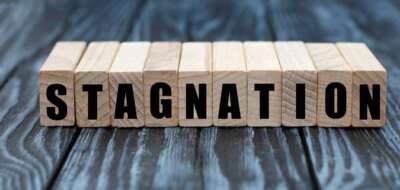
Waking up in the morning with low back pain is so common in today’s world. For many, it just comes with the territory of aging, even though it shouldn’t. Taking proper care of yourself is the first step to avoiding aches and pains later in life. But what if you do everything right and you still end up in pain because of some sort of trauma or disease? What can you do then? Well, acupuncture is a great place to start and you might be surprised at what can be deduce just by an examination. Here are some things East Asian Medicine practitioners will use to diagnose your condition.
1. Was there any trauma to your back? — In East Asian Medicine (EAM), trauma can lead to something called stagnation. What is stagnant? Blood and qi (pronounced “chee”). When you’re involved in some sort of trauma, there is usually bruising to the area and this is a form of blood stagnation. Even though the bruise may be gone, the stagnation may still be present and this is considered qi stagnation. So if you’ve been in an auto accident or even done too much heavy lifting, you may have blood and qi stagnation. Blood and qi stagnation are the most common reasons for low back pain.
2. Do you have a history of urinary tract infections? — In EAM, urinary tract infections and / or kidney stones indicate that there is damp heat in the energetic channels that run through the low back and groin area. And these problems can elicit a lot of pain in the lower back area. These types of scenarios are usually verified by a few laboratory tests and can then be treated with acupuncture and herbs.
3. Are you exposed to cold damp conditions frequently? — Another form of stagnation in EAM is known as an invasion of cold dampness in the channels. People who are constantly outside in the cold and damp can easily contract this form of stagnation. Many people describe this as if they are catching the flu with overall body achiness and heaviness. The pain tends to be centrally located in the lower back and it doesn’t improve with rest, like most back pain. Also this type of low back pain can be aggravated by cloudy, rainy days.
4. Are you angry or frustrated frequently? — Emotions play a big role in how your body feels and functions. When you are frequently frustrated or angry, your energetic channels actually become blocked or stagnant. This is a form of qi stagnation. As noted before, when the qi becomes stagnant, the body manifests it in the form of pain. The low back is commonly where that pain starts. So to avoid this type of qi stagnation, everyone needs to learn how to control their emotions or at least find some way to cope with them regularly.
5. (For women only) Do you have fibroids, heavy periods, severe cramping? — Women who suffer from heavy, painful periods (dysmenorrhea) or who have one or more fibroids in the uterus are quite familiar with blood and qi stagnation. The pain of these afflictions are commonly felt in the low back area and can range from sharp and stabbing to a lingering dull, achy type of pain. A fibroid is actually a benign tumor comprised mostly of blood and uterine tissue. Dysmenorrhea is caused by the uterine walls contracting, which creates blood stagnation. Acupuncture and herbs work very well at treating the pain associated with fibroids and dysmenorrhea, especially low back pain.
Low back pain caused by stagnation is generally easily treated using acupuncture and herbal formulas. Since the basic principle is to break up the stagnation, it is usually a quicker process than if you are suffering from a deficiency type of low back pain that needs more treatments to reverse the deficiency. If any of these conditions apply to you or someone you love, why not consider acupuncture and East Asian Medicine as a form of treatment? You might be surprised how your body responds.

